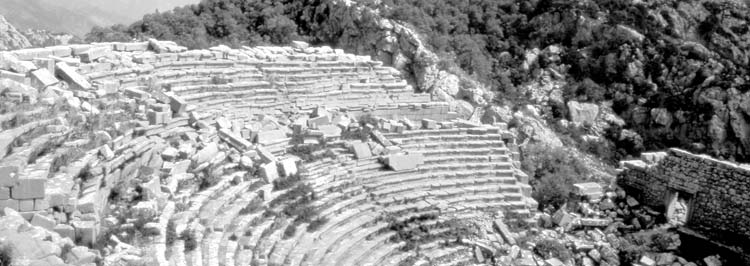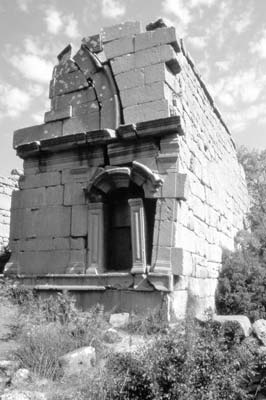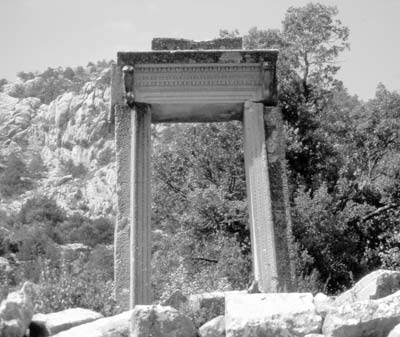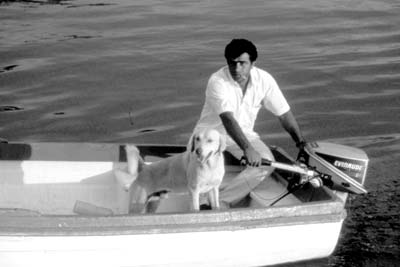Impregnable Termessos, Turkey
by Ed Kinney
Turkey, located at the crossroads of Europe, Asia and the Mediterranean, is a gold mine for travelers due to its rich heritage and reported 40,000 ancient sites. Though my wife, Moreen, and I have seen less than one percent of these, we feel fortunate to have visited many of its well-known ones during three in-depth trips in this pro-Western, largely Muslim country (the last trip in 1999). Officially, it is secular.
We’ve always enjoyed walking among Turkey’s fabulous ruins, attempting to capture the rapport of its past. Many Turkish tours highlight the country’s southern or Antalya area with its plethora of famous ruins close to the Mediterranean. On one such visit, with a company that no longer operates land tours, we visited two relatively unknown sites in the Taurus Mountains overlooking the Mediterranean. In a subsequent article, I’ll discuss wonderful Diocaesarea, but now let’s explore the ruins of Termessos (also known as Termessus).
Pisidians, a warlike people, built the city of Termessos 3,000 feet above the Mediterranean, providing them a great advantage against possible attacking enemies.
When Alexander the Great swept through the Antalya area of Turkey in 333 B.C., he decided not to attack Termessos after seeing its impregnable location. This was the first historical notation about ancient Termessos, a city that had an estimated population of 150,000 during the second and third centuries B.C.
Following Alexander the Great’s death in 323 B.C., his kingdom was split between rival generals. Termessos attempted to avoid taking sides but without success, due to intrigue and betrayal between the city’s youths and elders. This led to the death of the youths’ preferred general.
Later, in 71 B.C., the city became an ally, not a subject, of Rome, hence both Greek and Roman architectural influence is seen in Termessos. Earthquakes and possibly its remote location ultimately doomed Termessos. It was deserted sometime between the fifth and seventh centuries A.D.
Termessos is about 20 to 25 miles inland from Antalya, less than a 45-minute drive. Here there is a relatively flat parking area and a modest museum in Turkey’s Termessos Milli Parki (National Park). The nearby Temple of Hadrian appears as a welcoming gate to explore this ancient city in reasonably pristine condition due to its age.
We walked through the Temple of Hadrian, then under a forest cover on a steep path for about 20 minutes to the upper city. It’s worth the climb to see the city’s Roman-style theater and necropolis.
Richard Plunkett, of Lonely Planet Publications, wrote that the site appears to be a “Middle Eastern Machu Picchu nestled in the clouds.” During our visit to the upper city, clouds rolled back and forth over adjacent mountain ridges, enhancing these ancient ruins.
Remoteness with limited tourism has preserved ancient Termessos. It remains basically unspoiled except for the natural wear of time and destructive earthquakes. While standing on the top row of seats in the theater, it’s easy to envision back more than 2,000 years, when Alexander the Great and other warriors toyed with the idea but decided not to challenge impregnable Termessos.
Minutiae
• Visitors staying in Antalya should allow four to five hours to visit Termessos. Considerable walking on steep irregular paths is required to fully appreciate these ruins.
• For tourist information re Turkey, write to the Ministry of Culture & Tourism (821 U.N. Plaza, 4th Fl., New York, NY 10017; phone 877/367-8875 or 212/949-0160 or visit www.tourismturkey.org).
• There are several good webpages with detailed history and photographs of Termessos.
• There have been no excavations in Termessos.
• Currently there is no travel advisory for Turkey, but readers should always use caution in their travels, especially when visiting many of the countries discussed in this column.
Coming up: shadows of time on Diocaesarea, Turkey.




